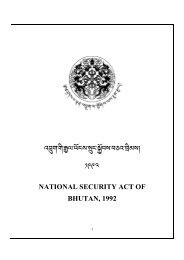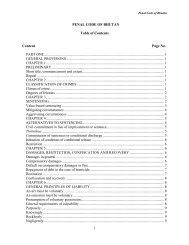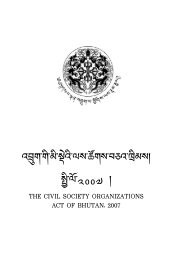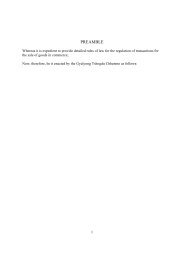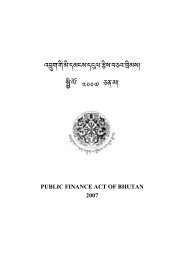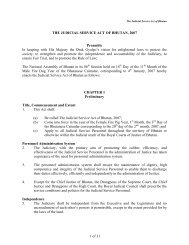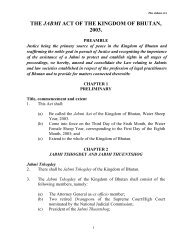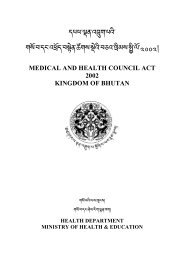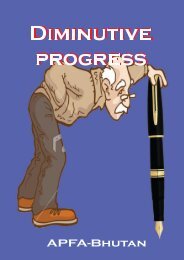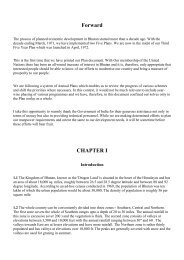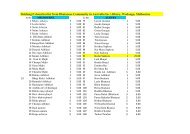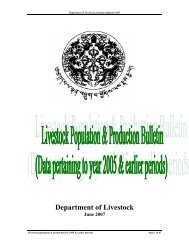journal of renewable natural resources bhutan - Ministry of Agriculture
journal of renewable natural resources bhutan - Ministry of Agriculture
journal of renewable natural resources bhutan - Ministry of Agriculture
- No tags were found...
You also want an ePaper? Increase the reach of your titles
YUMPU automatically turns print PDFs into web optimized ePapers that Google loves.
Honey productionAverage annual honey prouction when harvested twice is eight bottles(750ml/bottle). A colony/hive <strong>of</strong> indigenous bee produces maximum<strong>of</strong> seven bottles and minimum <strong>of</strong> one bottle or even less with anaverage <strong>of</strong> four bottles per harvest. This finding is close to earlierestimate <strong>of</strong> two to four bottles per harvest/ hive in mid-altitude areas <strong>of</strong>Tsirang and Dagana districts <strong>of</strong> Bhutan (Dorji, 2001). However, abeekeeper at Tabji reported that eight bottles <strong>of</strong> honey could beobtained in a single harvest for same bee species managed in improvedhive. Thus, use <strong>of</strong> improve hive is likely to double the yield. Apismelipona produce about one bottle honey per hive per year.Honey harvestingN. B. TamangBees are harvested using locally made knife. Usually smoke is createdinside the hive that drives away the bees and honey is then harvested.The honey once harvested is strained using double layer muslin cloth.Generally honey is harvested twice in a year, November-Decemberand February-March. Some farmers however harvest three times(February-March, June-July, November-December) some harvesteven four times while some harvest only once. Fortnightly harvesting<strong>of</strong> honey during late spring is also reported as there is sufficient honeyflow due to spring bloom. However, it is doubtful whether the maturedhoney could be harvested in this very short period.Seven bottles is reported to be obtained during spring harvest in Marchand low (1-2 bottles) in other seasons. Good harvest in March isattributed to flowering <strong>of</strong> buckwheat and mustard flower in winterwhich invariably is considered as best flora for bees. Less productionwhen harvested after monsoon is because bees are unable to go out tocollect nectars and pollen during rainy days and is the most food scarceperiod. Irregular and frequent harvesting also could have aggravatedthe situation.32



